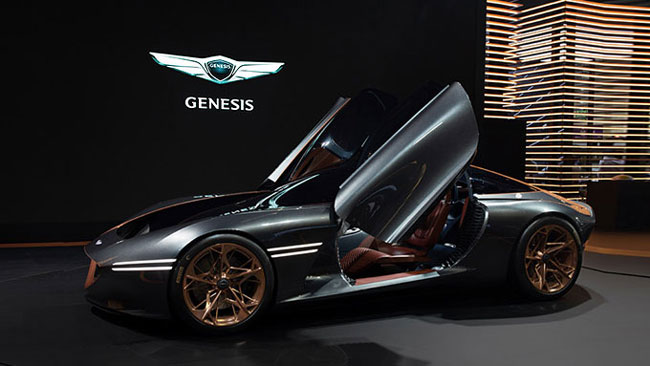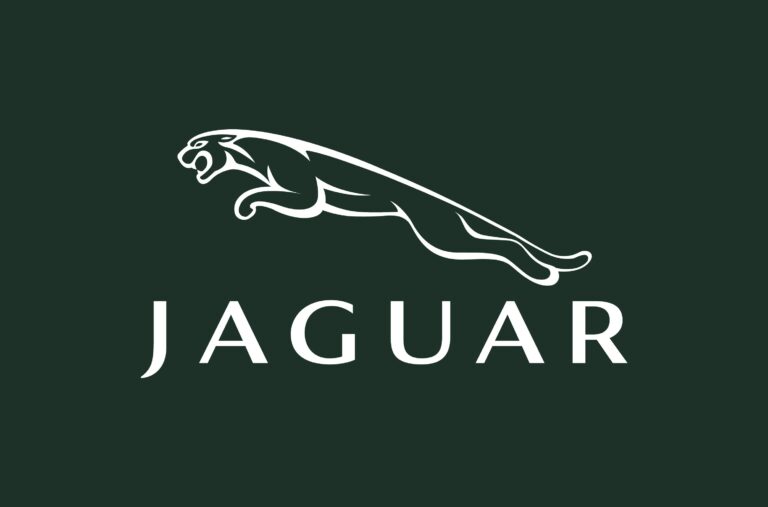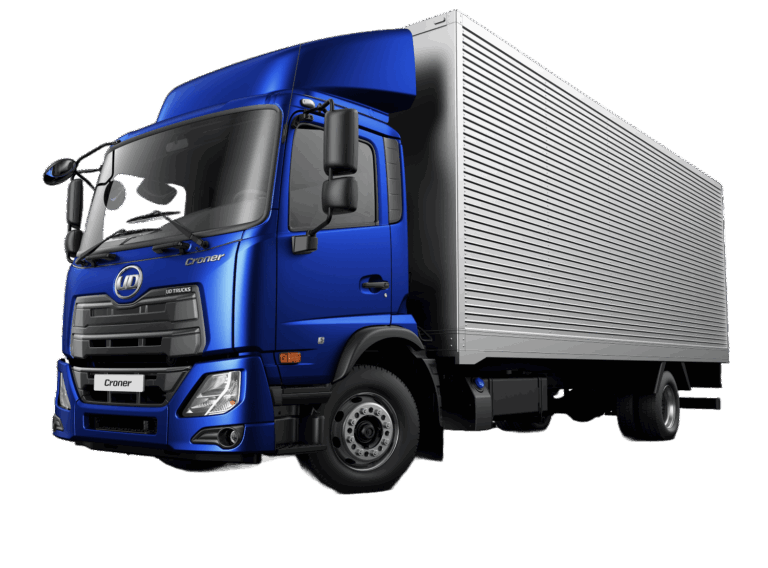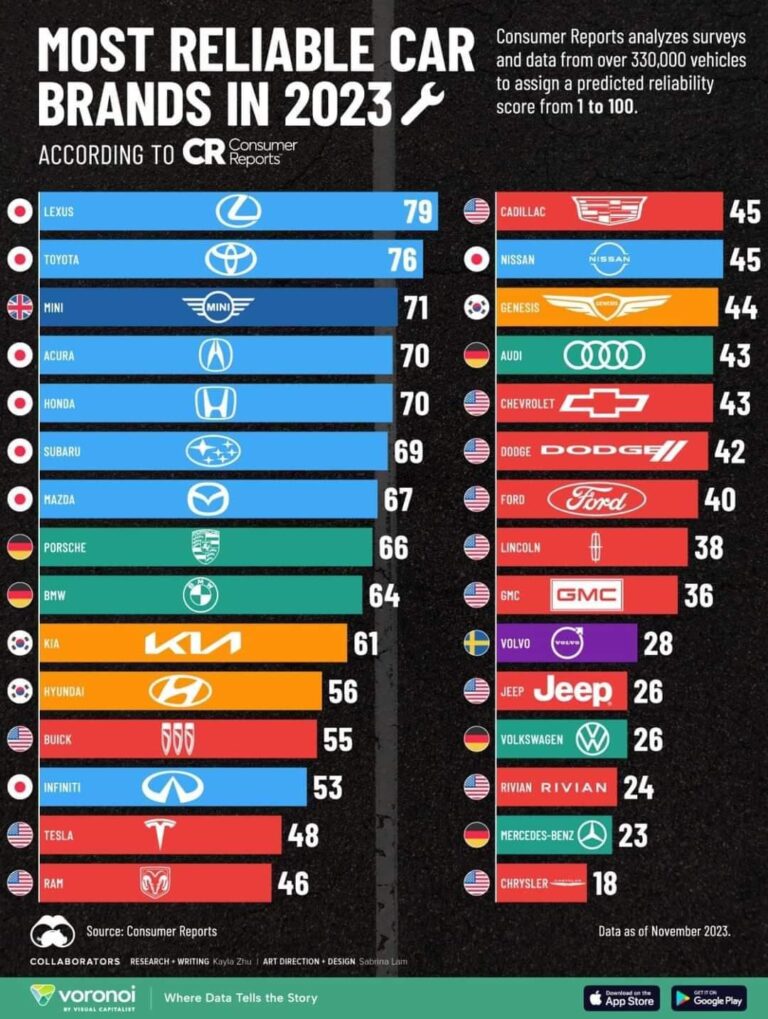Safest Car Brands 2020: A Comprehensive Guide to Protecting What Matters
Safest Car Brands 2020: A Comprehensive Guide to Protecting What Matters cars.truckstrend.com
Introduction: Driving Towards a Safer Future
In an increasingly complex world, the decision of which car to buy goes far beyond aesthetics, performance, or fuel efficiency. At its core, the paramount consideration for many consumers is safety. The year 2020 marked a significant period for automotive safety, with manufacturers pushing the boundaries of both passive protection and active accident prevention technologies. Identifying the safest car brands in 2020 isn’t merely about finding a vehicle that can withstand a crash; it’s about understanding which brands consistently integrate cutting-edge features designed to prevent accidents from happening in the first place, or to minimize injury should an impact occur.
Safest Car Brands 2020: A Comprehensive Guide to Protecting What Matters
This comprehensive guide will delve into the landscape of automotive safety in 2020, exploring the methodologies used to assess vehicle safety, highlighting the brands that excelled, and providing actionable insights for consumers prioritizing protection on the road. Understanding "Safest Car Brands 2020" means equipping yourself with the knowledge to make an informed decision that safeguards you and your loved ones.
Understanding Automotive Safety Ratings: The Pillars of Protection Assessment
To truly grasp what makes a car brand safe, it’s essential to understand the rigorous testing and evaluation processes conducted by independent organizations. In 2020, two primary bodies stood as the authoritative voices in vehicle safety assessment in North America:
The Insurance Institute for Highway Safety (IIHS)
The IIHS is a non-profit organization funded by auto insurers in the United States. It conducts its own crash tests and evaluates various aspects of vehicle safety, providing ratings that are highly influential. Their key awards for 2020 were:
- Top Safety Pick (TSP): Awarded to vehicles that earn "Good" ratings in six crashworthiness tests (driver-side small overlap front, passenger-side small overlap front, moderate overlap front, side, roof strength, and head restraints) and an "Advanced" or "Superior" rating for front crash prevention (vehicle-to-vehicle and vehicle-to-pedestrian). Additionally, at least one "Acceptable" or "Good" headlight system must be available.
- Top Safety Pick+ (TSP+): The highest award, requiring "Good" ratings in all six crashworthiness tests, "Advanced" or "Superior" ratings for both vehicle-to-vehicle and vehicle-to-pedestrian front crash prevention, and "Good" headlight ratings across all available trim levels.

The IIHS emphasizes real-world crash scenarios, including challenging small overlap tests that simulate hitting a tree or utility pole, and critically, evaluates the effectiveness of a vehicle’s headlights – a common point of failure for many vehicles.
The National Highway Traffic Safety Administration (NHTSA)
As an agency of the U.S. federal government, NHTSA is responsible for vehicle safety standards and consumer information. Their New Car Assessment Program (NCAP) assigns vehicles an overall safety rating from one to five stars, based on the results of:
- Frontal Crash Test: Simulates a head-on collision.
- Side Barrier Test: Mimics a T-bone collision.
- Side Pole Test: Replicates hitting a fixed object like a tree or utility pole.
- Rollover Resistance Test: Assesses the vehicle’s susceptibility to rolling over in a single-vehicle crash.


NHTSA’s ratings are straightforward and widely recognized, providing a quick benchmark for overall safety performance. In 2020, NHTSA also increasingly factored in the availability and performance of advanced driver-assistance systems (ADAS) in their evaluations.
Key Safety Technologies in 2020: Beyond Crumple Zones
While robust structural integrity and comprehensive airbag systems (passive safety) remain foundational, 2020 saw the widespread adoption and refinement of active safety technologies. These systems use sensors, cameras, and radar to monitor the environment around the vehicle, often intervening to prevent or mitigate collisions.
Advanced Driver-Assistance Systems (ADAS):
- Automatic Emergency Braking (AEB): Automatically applies the brakes if a collision is imminent and the driver doesn’t react in time. Often includes pedestrian detection.
- Lane Departure Warning (LDW) & Lane Keeping Assist (LKA): LDW alerts the driver if the vehicle drifts out of its lane without signaling, while LKA can gently steer the vehicle back into its lane.
- Blind Spot Monitoring (BSM) & Rear Cross-Traffic Alert (RCTA): BSM warns drivers of vehicles in their blind spots, and RCTA alerts them to approaching vehicles when backing out of a parking space.
- Adaptive Cruise Control (ACC): Maintains a set speed and a safe following distance from the vehicle ahead, automatically adjusting speed as needed.
- Forward Collision Warning (FCW): Alerts the driver to a potential frontal collision with an audible or visual warning.
These technologies, once exclusive to luxury vehicles, became increasingly standard or widely available across a broader range of models in 2020, significantly contributing to the overall safety profile of a brand’s lineup.
Top Contenders: Safest Car Brands in 2020
Based on the consistent performance in IIHS and NHTSA ratings, several car brands distinguished themselves in 2020 for their commitment to safety across their model lineups. These brands often had a high percentage of their vehicles earning Top Safety Pick or Top Safety Pick+ awards, alongside strong NHTSA 5-star ratings.
- Subaru: Consistently a top performer, Subaru often had nearly its entire lineup achieving IIHS Top Safety Pick or Top Safety Pick+ awards, thanks to their standard EyeSight driver-assist technology. Models like the Forester, Outback, Crosstrek, Legacy, and Ascent were frequently cited.
- Mazda: Mazda made significant strides in safety, with many of its 2020 models earning Top Safety Pick+ ratings. They focused on robust structural design and offering a suite of i-Activsense safety features as standard or widely available. The Mazda3, CX-3, CX-5, and CX-9 were notable examples.
- Volvo: Long synonymous with safety, Volvo continued its tradition of excellence. Their vehicles consistently achieved top ratings from both IIHS and NHTSA, often with superior crash protection and a comprehensive suite of standard active safety features (City Safety, Pilot Assist). The S60, S90, XC40, XC60, and XC90 were all strong contenders.
- Hyundai/Kia: These Korean automakers demonstrated remarkable improvement, with numerous models across their diverse lineups earning Top Safety Pick and Top Safety Pick+ awards. Their commitment to making advanced safety features standard or easily accessible in more affordable segments was a key factor. Examples include the Hyundai Palisade, Sonata, Kona, and the Kia Telluride, Forte, and Seltos.
- Honda: Honda’s commitment to safety, largely through their Honda Sensing suite, saw many of their 2020 models, such as the Accord, Civic, CR-V, and Odyssey, earn Top Safety Pick awards.
- Toyota: Similar to Honda, Toyota’s standard Toyota Safety Sense suite helped many of its popular models (e.g., Camry, Corolla, RAV4, Highlander) achieve Top Safety Pick or Top Safety Pick+ status.
- Lexus (Toyota’s Luxury Brand): Leveraging Toyota’s safety architecture and adding even more sophisticated features, Lexus models consistently achieved high safety ratings, often earning Top Safety Pick+ awards. The ES, RX, and UX were strong examples.
- Audi: As a premium brand, Audi consistently incorporated advanced safety technologies and robust engineering into its vehicles, leading to strong IIHS and NHTSA ratings for models like the A4, A6, Q5, and Q8.
It’s crucial to remember that while a brand might have a strong overall safety reputation, specific model-year and trim-level performance can vary.
Factors Beyond Brand: Model-Specific Safety and Trim Levels
While a brand’s overall commitment to safety is a strong indicator, the ultimate safety of a vehicle is model-specific. It’s not enough to say "Brand X is safe"; you must verify that the specific model and trim level you are considering has received top safety ratings.
- Model-Specific Ratings: Even within the same brand, a compact sedan might perform differently in crash tests than a large SUV due to differences in design, weight, and engineering. Always check the IIHS and NHTSA websites for the exact model and year you are interested in.
- Trim Level Disparities: A common challenge in 2020 was that while many advanced safety features were available, they were often bundled into higher, more expensive trim levels or optional packages. A base model might miss out on crucial features like Automatic Emergency Braking or high-performing headlights that are standard on a Top Safety Pick+ awarded trim. Always confirm what features are standard vs. optional for the specific trim you’re looking at.
- Headlight Performance: The IIHS significantly emphasized headlight ratings in 2020. Many otherwise safe vehicles failed to achieve the highest IIHS awards because their headlights (especially on lower trims) performed poorly, affecting nighttime visibility and increasing accident risk.
Making an Informed Decision: Practical Advice for Car Buyers
When shopping for a new or used car from 2020, follow these practical steps to ensure safety is prioritized:
- Consult IIHS and NHTSA Websites: These are your primary resources. Look up the specific make, model, and year. Pay close attention to IIHS’s detailed crash test results and headlight ratings, and NHTSA’s overall star rating.
- Prioritize Active Safety Features: Look for vehicles that offer AEB (with pedestrian detection), BSM, RCTA, and LKA as standard or easily accessible features. These technologies are proven to reduce crash risk.
- Evaluate Headlight Performance: A "Good" IIHS headlight rating across all trims is a strong indicator of safety, especially for those who drive frequently at night.
- Consider Vehicle Size and Weight: Generally, larger and heavier vehicles offer more protection in multi-vehicle crashes due to the principles of physics. However, this is balanced by the fact that many compact and mid-size cars now achieve excellent safety ratings due to advanced engineering.
- Test Drive and Assess Visibility: During a test drive, pay attention to blind spots, the clarity of the rearview camera, and the overall field of vision from the driver’s seat. Ensure that active safety alerts are not overly intrusive but effective.
- Budget for Safety: While advanced safety features can add to the cost, consider it an investment in your well-being. Sometimes, opting for a slightly higher trim or an optional safety package is worth the extra expense.
Challenges and Considerations
Despite significant advancements, navigating automotive safety in 2020 presented a few challenges:
- Feature Availability vs. Standardization: While many brands offered cutting-edge safety features, their availability often depended on the trim level, making it difficult for budget-conscious buyers to access the safest configurations.
- Driver Over-Reliance: As ADAS became more sophisticated, there was a concern about drivers becoming over-reliant on these systems, potentially leading to complacency. These systems are aids, not replacements for attentive driving.
- Cost of Repairs: The complexity of sensors and cameras involved in ADAS can lead to higher repair costs after even minor collisions, as calibration is often required.
Concluding Summary: Safety as a Non-Negotiable Standard
The year 2020 underscored a pivotal shift in automotive safety, moving beyond mere crashworthiness to embrace sophisticated preventative technologies. Brands like Subaru, Mazda, Volvo, Hyundai, Kia, Honda, Toyota, Lexus, and Audi consistently demonstrated a strong commitment to integrating these features, earning them top accolades from IIHS and NHTSA.
Ultimately, the safest car in 2020 wasn’t just about a brand name, but about the specific model’s engineering, the suite of standard and available active safety features, and its performance in rigorous, independent crash tests. By leveraging the wealth of information provided by safety organizations and prioritizing advanced safety technologies, consumers in 2020 were empowered to choose vehicles that offered unparalleled protection, making safety a non-negotiable standard for the modern driver. As technology continues to evolve, the pursuit of safer vehicles remains at the forefront of automotive innovation, ensuring a more secure journey for everyone on the road.
Safest Car Brands 2020: Representative Safety Performance & Price Range
This table provides a general overview of brands that consistently performed well in safety ratings for their 2020 models. Specific model performance and available features vary. Prices are approximate MSRP for entry-to-mid-level models within the brand’s 2020 lineup and can vary significantly based on trim, options, and region.
| Brand Name | Key Models (Known for Safety in 2020) | Typical IIHS Rating | Typical NHTSA Rating | Key Standard/Widely Available Safety Features | General Price Range (2020 MSRP) |
|---|---|---|---|---|---|
| Subaru | Forester, Outback, Crosstrek, Legacy, Ascent | Many TSP/TSP+ | High % of 5-star | EyeSight (AEB, ACC, LDW, LKA), Symmetrical AWD | $22,000 – $40,000 |
| Mazda | Mazda3, CX-3, CX-5, CX-9 | High % of TSP+ | High % of 5-star | i-Activsense (AEB, BSM, RCTA, LDW) | $20,000 – $45,000 |
| Volvo | S60, S90, XC40, XC60, XC90 | High % of TSP+ | High % of 5-star | City Safety (AEB w/ Pedestrian Detection), Pilot Assist, Lane Keeping Aid | $36,000 – $65,000+ |
| Hyundai | Palisade, Sonata, Kona, Elantra | Many TSP/TSP+ | High % of 5-star | SmartSense (AEB, LKA, BSM, Driver Attention Warning) | $19,000 – $48,000 |
| Kia | Telluride, Forte, Seltos, Soul | Many TSP/TSP+ | High % of 5-star | Drive Wise (AEB, LKA, BSM, Rear Cross-Traffic Alert) | $18,000 – $45,000 |
| Honda | Accord, Civic, CR-V, Odyssey | Many TSP | High % of 5-star | Honda Sensing (AEB, LDW, LKA, ACC) | $21,000 – $42,000 |
| Toyota | Camry, Corolla, RAV4, Highlander | Many TSP/TSP+ | High % of 5-star | Toyota Safety Sense (AEB, LDW, LKA, ACC) | $20,000 – $45,000 |
| Lexus | ES, RX, UX, NX | High % of TSP+ | High % of 5-star | Lexus Safety System+ (AEB, LKA, ACC, BSM) | $35,000 – $60,000+ |
| Audi | A4, A6, Q5, Q8 | Many TSP/TSP+ | High % of 5-star | Pre Sense (AEB, FCW), Lane Assist, Side Assist | $38,000 – $70,000+ |
Frequently Asked Questions (FAQ) about Safest Car Brands 2020
Q1: What’s the main difference between IIHS and NHTSA ratings?
A1: The IIHS (Insurance Institute for Highway Safety) is an independent, insurer-funded organization focusing on real-world crash scenarios, including challenging small overlap tests and headlight performance. Their awards are "Top Safety Pick" and "Top Safety Pick+." NHTSA (National Highway Traffic Safety Administration) is a government agency that provides a simpler 1-to-5 star overall safety rating based on frontal, side, and rollover crash tests, aiming to provide a quick consumer benchmark.
Q2: Do luxury car brands automatically mean safer cars?
A2: Not necessarily. While luxury brands often incorporate advanced safety features and robust engineering, many mainstream brands like Subaru, Mazda, Hyundai, and Toyota consistently achieve equally high, if not superior, safety ratings. It’s crucial to check specific model ratings from IIHS and NHTSA, as safety is model-specific, not just brand-dependent.
Q3: Are older cars significantly less safe than 2020 models?
A3: Generally, yes. Vehicle safety technology, both passive (structure, airbags) and active (ADAS), has evolved rapidly. Older cars typically lack the advanced crumple zones, sophisticated airbag systems, and especially the accident-prevention technologies (like AEB or BSM) that became widespread in 2020 models.
Q4: Should I always buy a car with all available safety features?
A4: While it’s highly recommended to prioritize models with comprehensive safety features, especially active ones like AEB and BSM, the decision depends on your budget and needs. However, the more safety features a car has, especially those that prevent crashes, the better protected you generally are. Always aim for a "Top Safety Pick+" if your budget allows.
Q5: How much do advanced safety features add to the cost of a car?
A5: In 2020, the cost varied. Many mainstream brands began offering suites like Honda Sensing or Toyota Safety Sense as standard on most trims, adding little to the base price. For other brands, these features might have been part of an optional package costing anywhere from a few hundred to several thousand dollars. While it adds to the upfront cost, these features can potentially save lives and may even lower insurance premiums in the long run.






